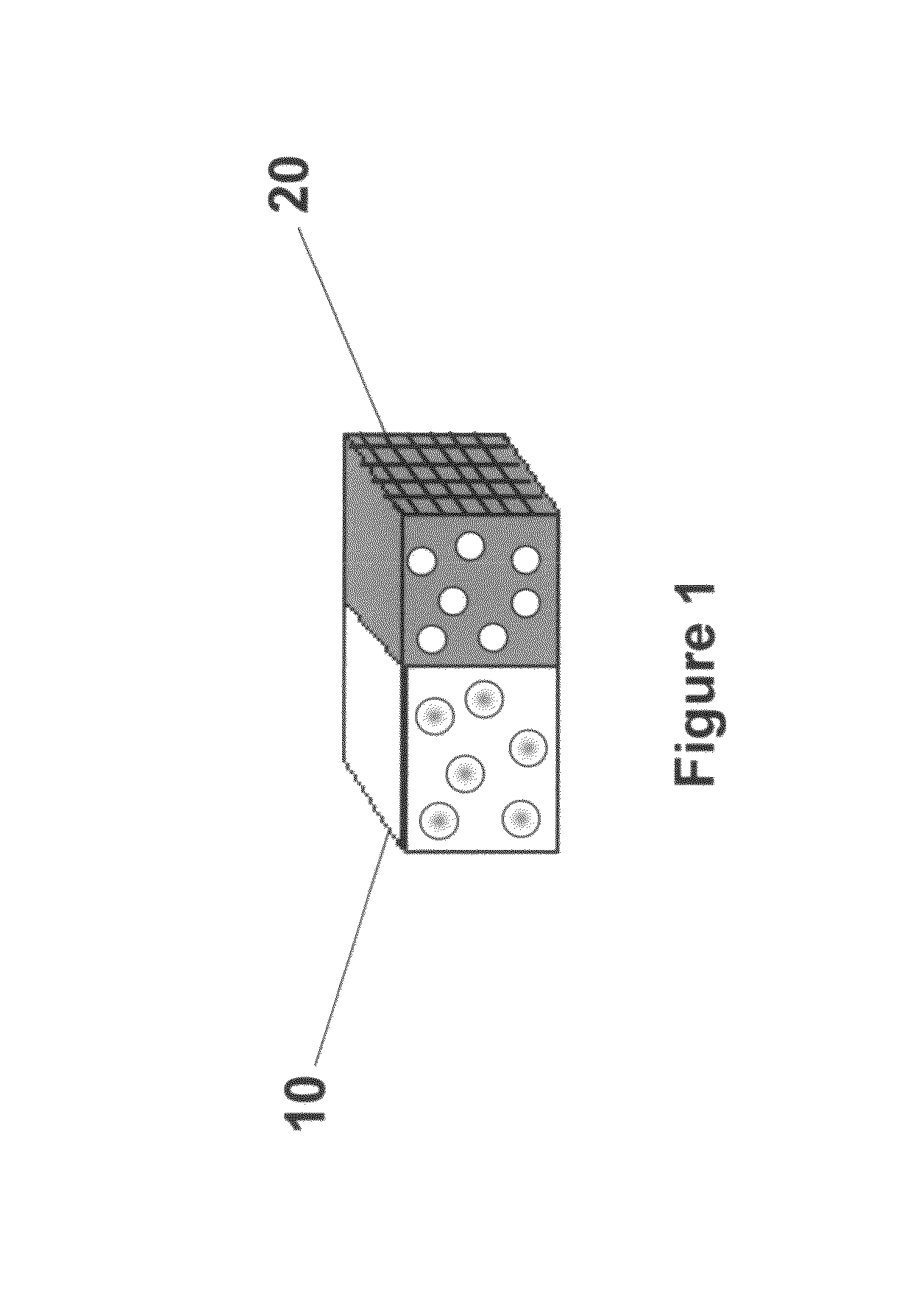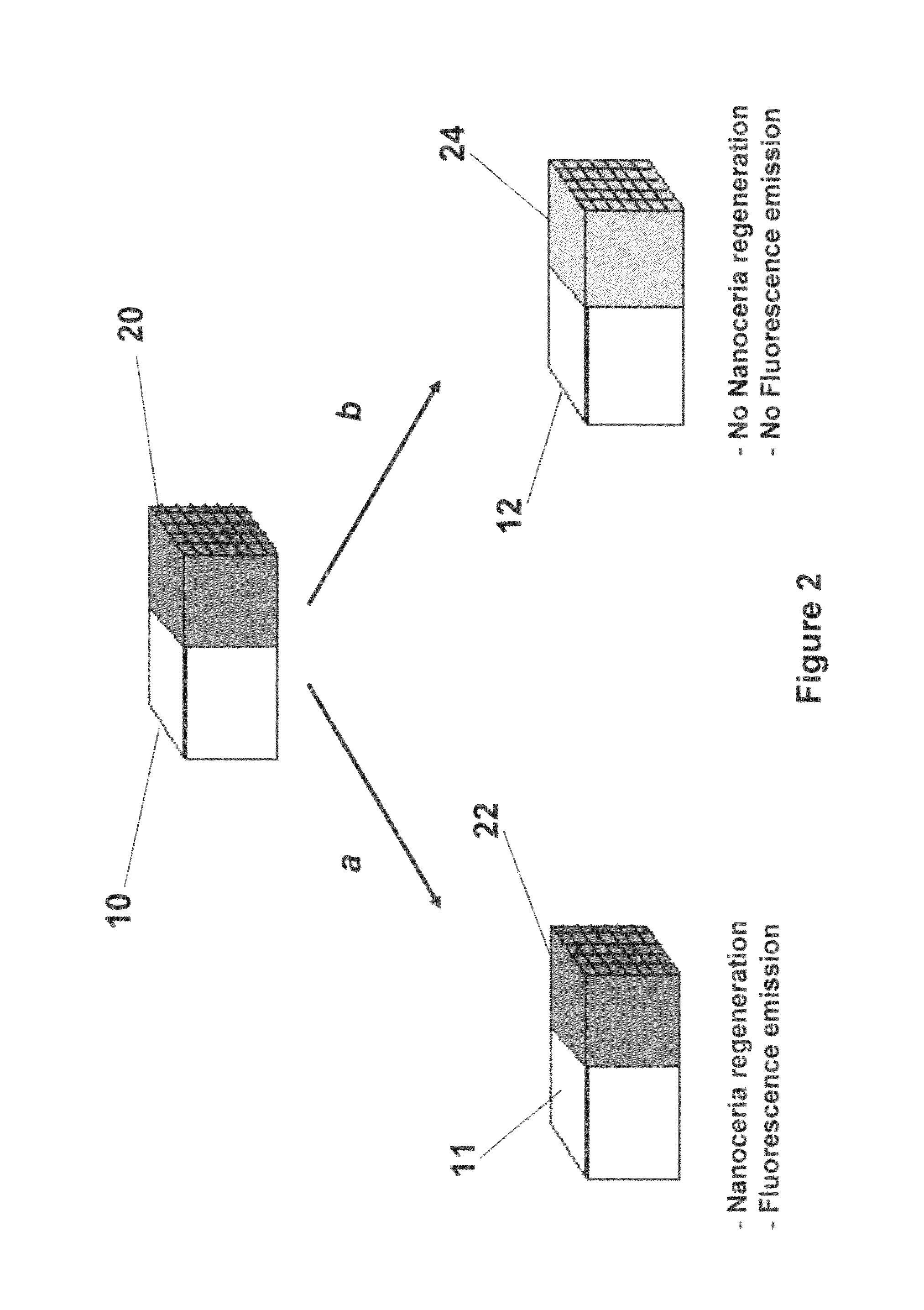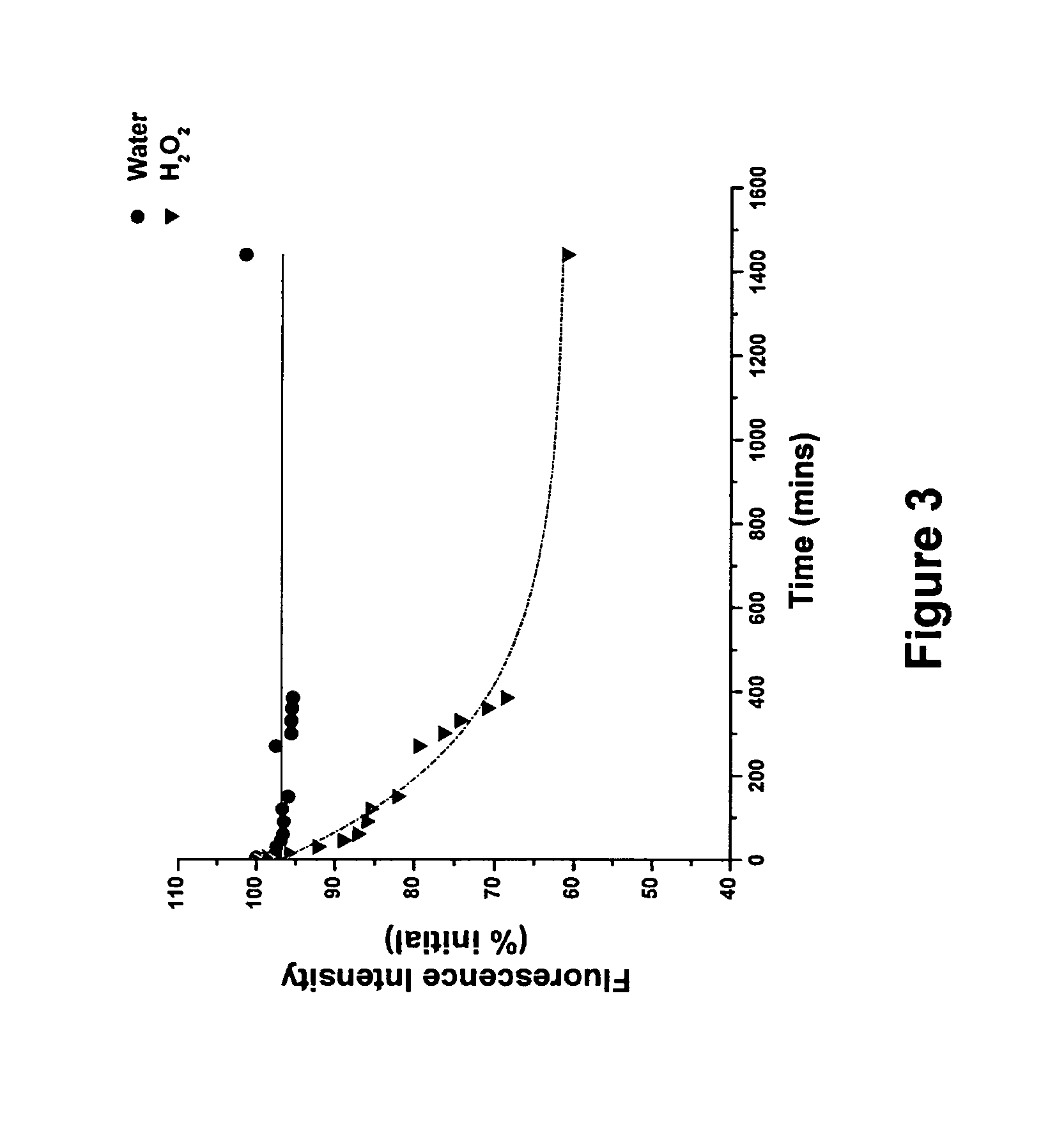Cerium oxide nanoparticle-based device for the detection of reactive oxygen species and monitoring of chronic inflammation
a technology of reactive oxygen species and nanoparticles, applied in the field of nanoparticles, can solve the problems of severe pathological conditions, organisms without protective apparatuses, and organisms without mechanisms to handle the storage, utilization and release of reactive oxygen elements from the body, and achieve the effect of preventing adverse side effects
- Summary
- Abstract
- Description
- Claims
- Application Information
AI Technical Summary
Benefits of technology
Problems solved by technology
Method used
Image
Examples
second embodiment
[0128]Multimodal monitoring of inflammation through a device, consisting of a ROS-scavenging chamber 30 with nanoceria and a multimodal monitoring chamber 40 with DiR-doped dextran-coated iron oxide nanoparticles is shown in FIG. 15. The use of a multimodal DiR-Dex-IO nanoparticle allows magnetic resonance imaging (MRI), by the monitoring chamber and represents the present invention.
[0129]Multimodal monitoring of inflammation is useful when under elevated reactive oxygen species (ROS) levels or loss of nanoceria regeneration; the fluorescence emission and the magnetic resonance imaging of the nanocomposite changes and the ROS beacons facilitate tracking with the use of chemiluminescence, magnetic relaxation or X-ray contrast agents.
[0130]In FIG. 15, the ROS scavenging chamber 30 is positioned adjacent to multimodal monitoring chamber 40 and held in position by an adhesive or glue. In the two chamber device, there is no exchange of particles between the two chambers. Under conditions...
PUM
 Login to View More
Login to View More Abstract
Description
Claims
Application Information
 Login to View More
Login to View More - R&D
- Intellectual Property
- Life Sciences
- Materials
- Tech Scout
- Unparalleled Data Quality
- Higher Quality Content
- 60% Fewer Hallucinations
Browse by: Latest US Patents, China's latest patents, Technical Efficacy Thesaurus, Application Domain, Technology Topic, Popular Technical Reports.
© 2025 PatSnap. All rights reserved.Legal|Privacy policy|Modern Slavery Act Transparency Statement|Sitemap|About US| Contact US: help@patsnap.com



